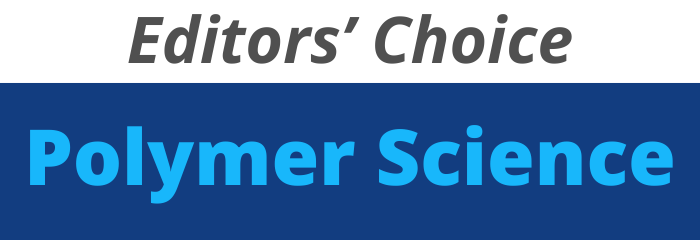Journal list menu
Export Citations
Download PDFs
Cover Picture
Macromol. Rapid Commun. 7/2017
- First Published: 04 April 2017
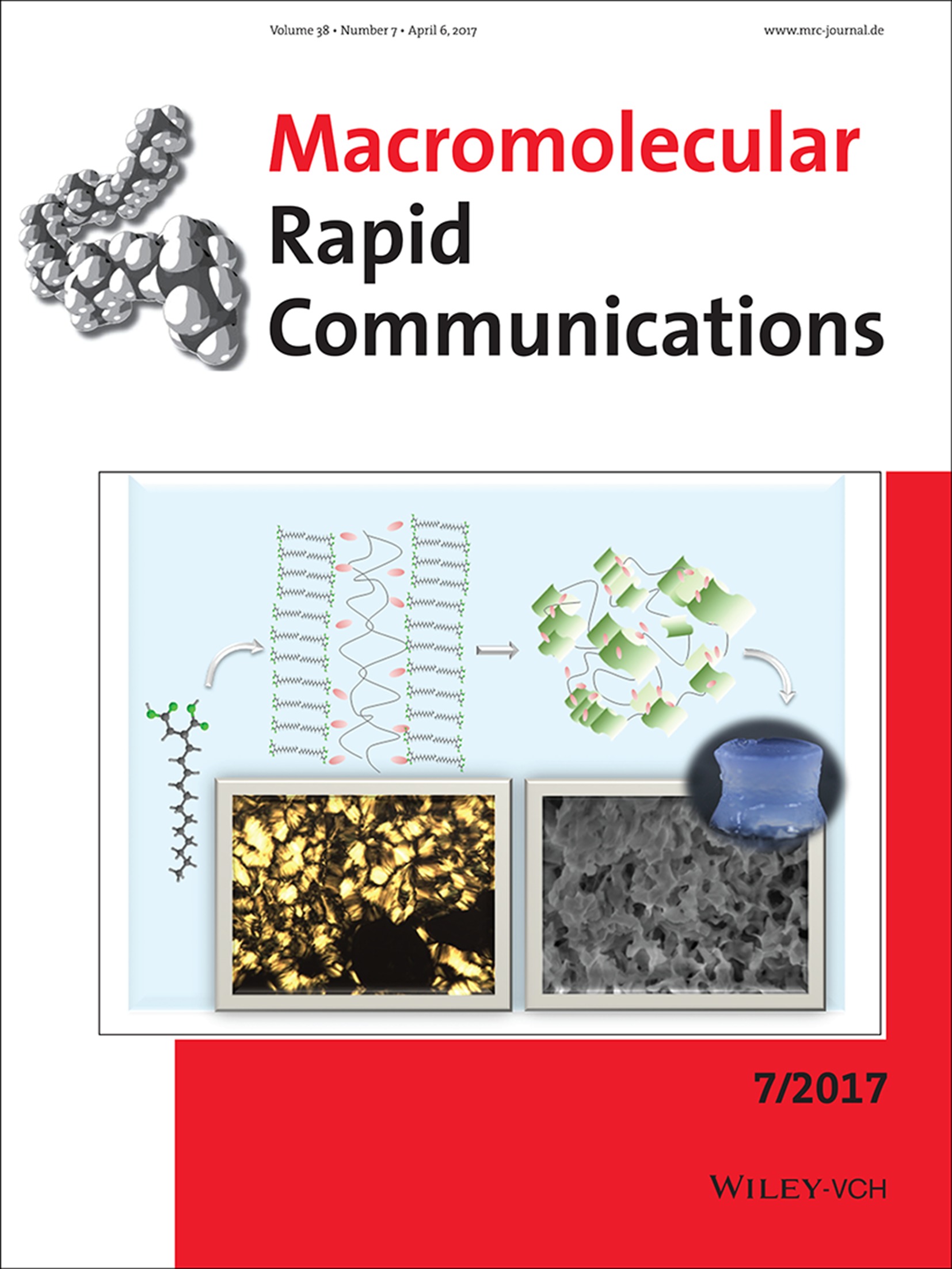
Front Cover: Liquid-crystal molecules self-assemble into bilayer membrane sheets to form supramolecular hydrogels with an interlayer spacing of 30–40 nm. The membranes act as physical crosslinks in the hydrogels via cooperative hydrogen bonding between membranes and entangled linear polymers. The resulting soft materials show some unique properties, such as temperaturedependent optical transmittance. Further information can be found in article number 1600762 by Youfeng Yue.
Masthead
Contents
Communications
Self-Assembled Liquid-Crystalline Membranes Form Supramolecular Hydrogels via Hydrogen Bonding
- First Published: 16 February 2017
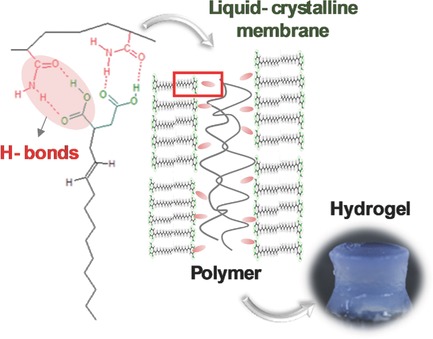
Small molecules automatically self-assemble into liquid-crystalline membranes to form supramolecular hydrogels with an interlayer spacing of 40 nm. The membrane domains act as physical crosslinks in these hydrogels via the cooperative hydrogen-bonding between membranes and linear polymers. These hydrogels show unique properties, such as temperature-dependent mechanical performance/optical transmittance, which have potential applications in biological membranes, drug release, and optical filters.
Responsive Thiolactone-Derived N-Substituted Poly(Urethane-Amide)s
- First Published: 13 February 2017
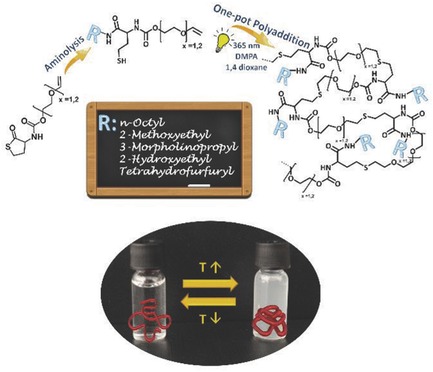
Several AB′ monomers containing a thiolactone unit and a vinyl ether, separated by a polyethylene oxide (PEO)-spacer, have been prepared and opened via aminolysis, after which linear poly(amide-urethane)s with different side chains (Ri) have been generated by radical polyaddition upon UV irradiation. The obtained polymers have a lower critical solution temperature in water and for specific amines; also, multiresponsive behavior can be obtained.
Omnidirectional Shape Memory Effect via Lyophilization of PEG Hydrogels
- First Published: 14 February 2017
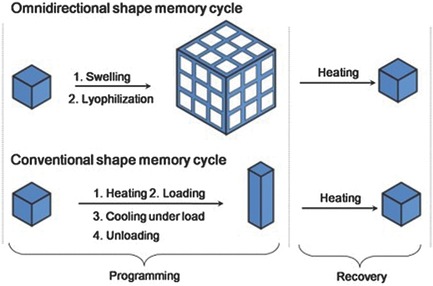
A novel shape memory programming method is presented utilizing lyophilization of a crosslinked hydrogel with a thermal transition in its dry state. The method allows significant omnidirectional shrinkage upon heating triggered recovery from a porous dried gel to a compact structure, which can hardly be achieved by other programming methods.
Bioinspired Design of a Robust Elastomer with Adaptive Recovery via Triazolinedione Click Chemistry
- First Published: 15 February 2017
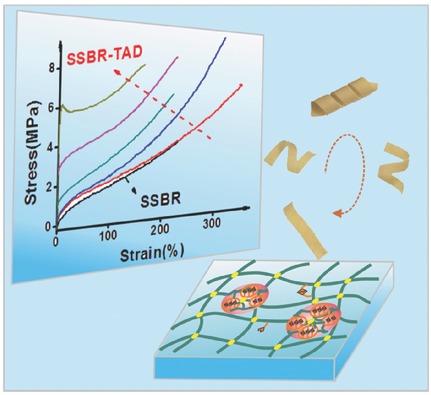
Inspired by “sacrificial bond”, the clusters based on hydrogen bonds, which form a separated microphase, are engineered into a pre-crosslinked diene rubber via triazolinedione click chemistry. The clusters serve as sacrificial bonds during stretching and efficiently dissipate energy, improving the overall mechanical properties of the rubber. Simultaneously, their hierarchical stability endows the rubber with promising triple-shape memory behavior.
Using Diphenylphosphoryl Azide (DPPA) for the Facile Synthesis of Biodegradable Antiseptic Random Copolypeptides
- First Published: 07 February 2017
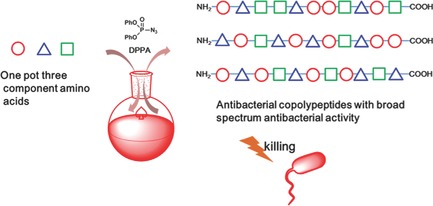
A facile method for the large-scale synthesis of random polypeptides composed of multiple (i.e., cationic, hydrophobic, and hydrophilic) amino acids is proposed by using diphenylphosphoryl azide. The copolypeptides mimicking hose defense peptide LL-37 and lipopeptide antibiotic polymyxin B show broad-spectrum antibacterial effects against both Gram-positive, Gram-negative strains, and even multidrug-resistant clinically relevant strains.
Beyond Donor–Acceptor (D–A) Approach: Structure–Optoelectronic Properties—Organic Photovoltaic Performance Correlation in New D–A1–D–A2 Low-Bandgap Conjugated Polymers
- First Published: 13 February 2017
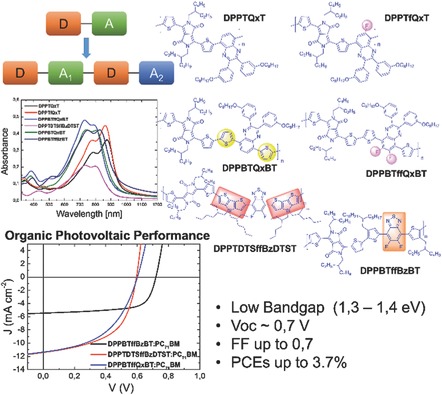
New low-bandgap conjugated polymers have been developed based on the D–A1–D–A2 approach. Systematic studies provide the first insights into how the nature of the monomers used to synthesize these new D–A1–D–A2 low-bandgap copolymers adjust the maximum absorption wavelengths, the optical and electrochemical bandgaps, the ionization potential and the electron affinity, and finally the organic photovoltaic performances.
Synthesis of Hydroxy-Functionalized Cyclic Olefin Copolymer and Its Block Copolymers with Semicrystalline Polyolefin Segments
- First Published: 15 February 2017
Metallo-Polymer Chain Extension Controls the Morphology and Release Kinetics of Microparticles Composed of Terpyridine-Capped Polylactides and their Stereocomplexes
- First Published: 07 February 2017

The microstructure of polylactide microspheres can be tuned by chain extension based upon differently strong metal complexation and by additional enantiomeric stereocomplexation. With this, porous microspheres can be formed that release encapsulated payloads faster than microspheres with smooth surfaces.






